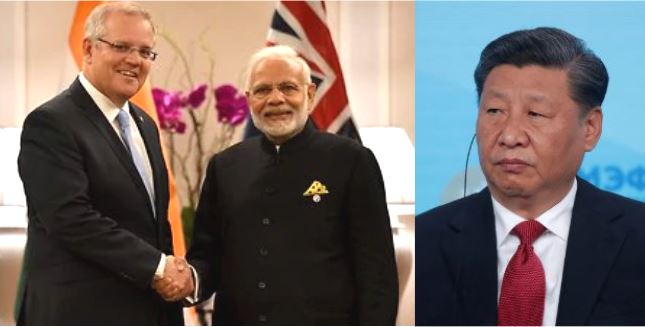Amidst the Coronavirus Pandemic and worldwide outrage against China for mishandling and covering up the severity of Wuhan virus, Australia has found itself doing most of the heavy-lifting when it comes to mobilising international opinion against Beijing. It has spoken up about WHO’s misgivings, inclusion of Taiwan in the WHO, Chinese wet markets and an international investigation into COVID-19 origins in China. And this has come at a heavy cost to Australia, which shares beneficial trading equations and a sizeable trade surplus over China.
Australian PM Scott Morrison’s diplomatic offensive against China has led to the Dragon retaliating with tariffs on imports from Australian across agricultural products, abattoirs, Coal and Iron ore. The hardest hit are Australia’s Barley producers as the Xi Jinping regime has slapped 80% tariff on Australian Barley. But the Australian Barley producers have found respite in China’s neighbourhood itself- the world’s largest democracy India.
As China imposed steep tariff barriers on the Barley imports from down under, the Australian Barley producers stared at a huge sales gap of 3.4 million tonnes of fresh crop. China has been the biggest market of Australian Barley since the Dragon overtook Saudi Arabia in terms of Australian Barley consumption. In 2016-17, Australian Barley exports to China went as high as 6 million tonnes.
Therefore, it is not a matter of surprise that huge losses have been predicted for the Australian Barley market. The tariffs have been imposed by China for five years, and Canberra wants to approach the World Trade Organisation (WTO) to appeal against the Chinese tariffs. But the appeals process is slow and cumbersome, and it could take years before the Morrison government finds some relief through trade disputes adjudication.
Industry and power groups estimate that the elimination of Chinese market could lead to the Barley sector losing 500 million dollars every year. While the Barley producers in Australia are staring at huge losses, they have found a new lease of life in India.
In February, India had opened up its market to Australian Barley for the first time. Earlier, Australia was not able to send its Barley produce to India, because of the use of phosphine, a pesticide, on the gains. Till now, India required crops to be treated with a different pesticide called methyl bromide.
The two Australian states- Western Australia and South Australia that are major producers of Barley do not use methyl bromide. But as India removed the restriction in February, Australia gained access to the Indian markets.
This is a major relief for the Barley producers in Australia and now it is planning to export 5,00,000 tonnes of malt barley to the Indian market. Australia’s strategy is now to use the open market in India to set off the losses that it will be facing due to steep Chinese tariffs.
Grain Producers Australia chairman Andrew Weidemann told The Land, “The proposed changes are a great opportunity for the Australian malting barley industry, allowing us to look at extending the number of markets for our barley.”
Barley market insiders in Australia feel that as Indo-Australian ties grow stronger, the volume of Barley exports to India could go up to a million, and at current prices this would mean a windfall of 180 million dollars to the industry.
Welcoming the Modi government’s decision, Grains Industry Market Access Forum (GIMAF) executive manager Tony Russell said, “The Indian market offers new export opportunities for Australian malting barley and reduces our dependence on the Chinese market in particular.”
India’s beer market is not as well developed as the Chinese beer market, which fuelled Australian exports to the country but the Indian beer market is also picking up now, which is why Australia remains optimistic about setting off the losses from Chinese tariffs by accelerating exports to India.
In fact, when Australia’s PM Scott Morrison holds a virtual summit with Prime Minister Modi on June 4, he is expected to strongly push for Australian exports into India, including agricultural products such as Barley.
Since February, when the Coronavirus Pandemic led to a shortfall in Chinese demand for Australian goods, Australia has been pushing for stronger ties with India. Australia’s Trade Minister Simon Birmingham spoke about the need for improving Australia-India relations as the Pandemic slashed Chinese trade.
Now that Australia’s activism against Chinese opacity has led to economic action from Beijing, which accounts for one-third of Australia’s exports, the Scott Morrison government is looking at India to fill in the gap caused by Chinese tariffs. India too has responded by opening up its market to Australian Barley.
